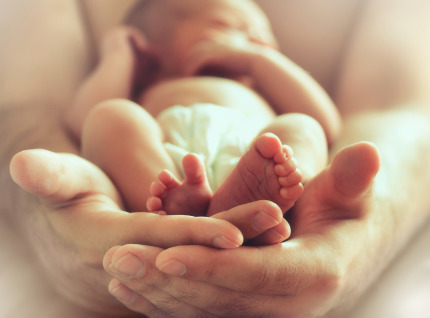9,209 births in January

9,209 births in January
Statbel publishes today the provisional monthly results of the statistics on births.
The first provisional figures show that in January 2024, 9,209 babies were born in Belgium: 5,262 in Flanders, 2,788 in Wallonia and 1,159 in the Brussels-Capital Region.
These results were calculated based on Demobel, Statbel’s demographic database (source: National Register).
As these figures are provisional, it is not yet possible to draw any clear conclusions, either on a monthly or on an annual basis.
For that, we will have to wait for the final publication of population figures on 1 January 2025 mid-2025.
Births per province and the Brussels-Capital Region
| Province/Region | Jan 2023 | Feb 2023 | Mar 2023 | Apr 2023 | May 2023 | Jun 2023 | Jul 2023 | Aug 2023 | Sep 2023 | Oct 2023 | Nov 2023 | Dec 2023 | Jan 2024 |
|---|---|---|---|---|---|---|---|---|---|---|---|---|---|
| Brussels-Capital Region | 1,125 | 1,076 | 1,173 | 1,112 | 1,155 | 1,191 | 1,190 | 1,217 | 1,102 | 1,202 | 1,218 | 1,135 | 1,159 |
| Province of Antwerp | 1,570 | 1,483 | 1,620 | 1,589 | 1,657 | 1,655 | 1,664 | 1,767 | 1,518 | 1,605 | 1,498 | 1,486 | 1,620 |
| Province of Flemish Brabant | 897 | 816 | 965 | 941 | 937 | 898 | 978 | 981 | 845 | 965 | 851 | 864 | 858 |
| Province of Walloon Brabant | 290 | 304 | 303 | 279 | 278 | 286 | 305 | 272 | 292 | 291 | 260 | 271 | 270 |
| Province of West Flanders | 874 | 806 | 947 | 891 | 948 | 943 | 947 | 970 | 863 | 841 | 796 | 753 | 913 |
| Province of East Flanders | 1,185 | 1,095 | 1,176 | 1,180 | 1,257 | 1,244 | 1,254 | 1,291 | 1,154 | 1,233 | 1,145 | 1,189 | 1,221 |
| Province of Hainaut | 1,126 | 938 | 1,080 | 1,014 | 1,027 | 1,073 | 1,157 | 1,073 | 1,075 | 1,087 | 1,047 | 967 | 1,064 |
| Province of Liège | 891 | 838 | 835 | 835 | 944 | 899 | 937 | 930 | 844 | 837 | 856 | 888 | 877 |
| Province of Limburg | 632 | 579 | 693 | 585 | 608 | 642 | 611 | 684 | 593 | 620 | 567 | 565 | 650 |
| Province of Luxembourg | 227 | 227 | 253 | 225 | 250 | 220 | 245 | 264 | 277 | 252 | 256 | 244 | 220 |
| Province of Namur | 387 | 361 | 407 | 348 | 408 | 397 | 377 | 407 | 376 | 365 | 366 | 366 | 357 |
Purpose and brief description
The statistics on births and fertility are compiled based on two sources: the declaration forms for births at the municipal civil registry and the National Register. The first source is the most important and most extensive one. It provides a lot of information on all the children born in the country (de facto births) and on their parents. The second source is the fastest. However, it only provides information on the births of children whose mother is registered in the National Register. By combining these two sources and using the National Register as a basic source from 2010 on, the statistics only record live births to women residing legally in Belgium, regardless of whether these births take place in Belgium or abroad. These births are broken down according to the administrative units of the country, according to the main characteristics of the mother and according to certain characteristics of the newborn child. A number of fertility indicators can also be derived. It is therefore possible to position the level and evolution of the country’s demographic dynamics. The fertility rate by age is the ratio between the number of live births to women of a certain age and the average number of women of that age, for the given year. The total fertility rate (TFR) summarises the successive fertility rates by age and is the sum of those figures. The TFR is the number of children a woman would have in her reproductive years if she lived with the same fertility rate at each age...
Population
All live births
Periodicity
Annually.
Release calendar
Results available 1 year after the reference period
Definitions
Month of birth: Month of birth, from the date of birth
Child gender: Gender of the child
Place of birth: Place of delivery:
Twin birth: Total number of births, including stillbirths, following the pregnancy
Birth order of the child: Birth order of the child in all live births to the mother
Pregnancy duration: Duration of the pregnancy (in weeks) at the time of the birth
Type of childbirth: Type of help in childbirth
Birth defects: Presence of one or more birth defects
Weight: Weight (in grammes) of the child at birth
APGAR after 1 min: APGAR score after 1 minute.
